
All categories
Featured selections
Trade Assurance
Buyer Central
Help Center
Get the app
Become a supplier

(17034 products available)




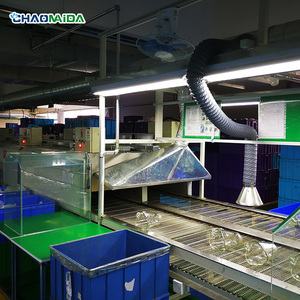









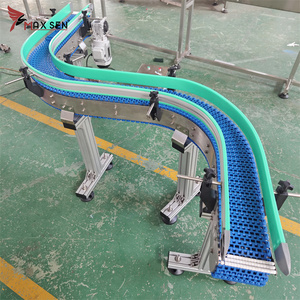



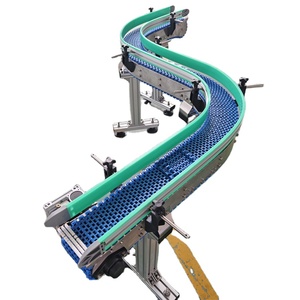





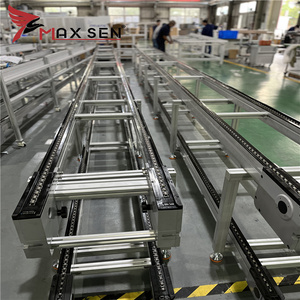
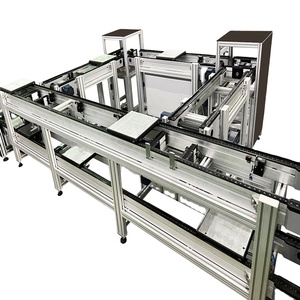


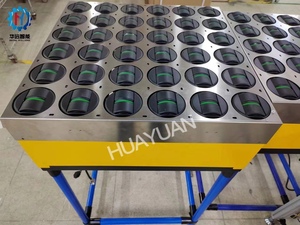

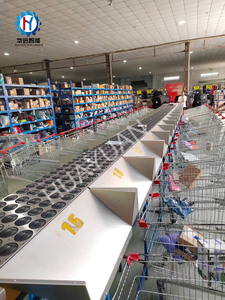





















In modern manufacturing, the importance of an assembly line cannot be understated. Especially with the introduction of conveyor system assembly lines, the efficiency and speed of product assembly have increased manifold. These conveyor belt assembly lines come in several types, each serving a distinct purpose depending on the requirements of an industry.
Continuous conveyor systems are the backbone of industries where constant mass production is required. These systems move at a steady pace, ensuring products remain in constant motion. This uniform speed reduces bottlenecks and ensures that each workstation receives the required number of items, facilitating smooth and structured operations. In industries like petrochemicals and food processing, where the production volume is astronomical, such systems' unyielding and methodical flow is invaluable. Operating with minimal pauses, a continuous conveyor is designed for peak performance in high-capacity environments.
The line-fed conveyor system is designed to facilitate the assembly processes where specific tasks need focused attention. Unlike continuous systems, line-fed conveyors move only when needed, supplying items directly to the workstations. This feature proves invaluable in industries where tasks demand time-intensive manual intervention, such as electronics assembly. By minimizing the movement during assembly, line-fed systems not only enhance productivity but also ensure that quality control is not compromised. Their adaptability to varying production needs makes them a favorite in sectors where assembly intricacy is paramount.
Indexing conveyor systems distinguish themselves by providing products to assembly stations in fixed intervals or 'indexing' steps. This stop-and-go motion benefits assembly tasks requiring employees' close attention to detail. For example, in the automotive industry, where many complicated processes occur simultaneously, indexing conveyors offer superb control over product placement. Each workstation receives its batch precisely synchronized with assembly speed. This system can boost productivity while minimizing the chances of mistakes in complex procedures.
A conveyor assembly line is crucial in streamlining processes across multiple industries. Understanding the diverse applications can help industries optimize their operations and improve production efficiency.
The automotive industry is among the most significant beneficiaries of conveyor assembly lines. With the help of conveyor belts, the production process has become extremely systematic. From basic components like engines and axles to simple car or truck parts like tires, the entire assembly process is managed effectively. San Diego Metal Finishing points out the significance of optimizing this sector. For instance, when creating electric cars, the need for optimization increases. This is where conveyor lines come in handy. They help auto manufacturers finish their work faster. They also help with quality checks, ensuring every car meets safety standards.
In electronics manufacturing, precision and speed are crucial. Conveyor assembly lines transport circuit boards and other components through various assembly stages. From soldering to component installation, each step is performed quickly, accommodating the high demand for electronic devices. Automated quality checks on these lines ensure that only defect-free products reach the market, further enhancing efficiency.
Food processing industries use conveyor assembly lines for packaging, labelling, and sorting food products. These lines ensure that food products move through various stages - from inspection to packing - safely and efficiently. The ability of conveyor systems to integrate perpendicularity with other tools in the assembly process, such as bagging machines and automated inspection systems, optimizes production without compromising quality or safety.
Pharmaceutical companies rely on conveyor assembly lines for packaging and sorting medications. These lines help automate tasks like labelling bottles, which is essential in an industry where time and accuracy are critical. This automation significantly reduces human error and increases production speed. Furthermore, conveyor lines facilitate rigorous quality control measures, ensuring all packaged drugs are correctly labelled and within acceptable quality standards before distribution.
Conveyor assembly lines play a crucial role in modern distribution centres, particularly in sorting and routing packages. The speed and accuracy of these lines significantly enhance order fulfillment processes. Automated sorting systems on conveyor belts swiftly categorize packages based on destination, size, or shipping method. This not only reduces the time taken to process shipments but also minimizes errors, leading to more accurate deliveries. With the exponential growth of e-commerce, the ability of conveyor systems to handle varying package sizes and integrate with advanced technologies like AI for predictive sorting has become indispensable in streamlining logistics operations.
Mobility
Most conveyors can be easily moved around, which makes it simpler to change the assembly line setup or transport them to different areas. With advancements in technology, many modern conveyors now come with wheels or tracks for easy mobility, especially in dynamic work environments.
Orientation
A lot of conveyor systems have been designed to turn products if necessary. Grippers with special properties play a significant role in this orientation process. The specialized grippers ensure objects are always positioned correctly, which is vital when items need to be in a particular stance for assembly or processing. These adjustments stop any delays that might happen from manual flipping, which can be both time-consuming and inefficient.
Speed
Speed control helps to prevent the belt from rolling too fast or too slow. Variable speed controls of conveyors help boost productivity by varying the speed to match the required assembly rate. They offer the flexibility needed in today's changing manufacturing world, where speed might have to be adapted to order needs or production changes the necessity to be ready for the competing market.
Automation Integration
Many circle conveyors can be tied to automated gadget systems. Using sensors, robots, and other electronic gadgets can create many efficiencies in the manufacturing process. Automating these tasks can help reduce the reliance on manual labour, which can be prone to inaccuracy, therefore increasing Product and Quality output and Quality. Automation integration also helps create Industry 4.0 connectivity, which is crucial to today's manufacturing operations.
Safety Features
Safety covers like guards, emergency stop switches, and sensors are frequently part of conveyor design to minimise workplace accidents. Safety is always considered while developing industrial equipment. Safety features ensure that all work done is done with care and protects the workers from potential harm while still maintaining optimal production.
Select Location and Mounting
The first step in a successful installation is for the personnel to select the right place for the conveyor to be installed. This is based on the requirements of the workflow and the area size. That place should also be where the parts can flow easily. Once a location is selected, the conveyor can be easily mounted using brackets or anchors on the floor or walls to hold the conveyor firmly. Proper installation of the base is essential for long-term stability and performance.
Aligning the Frame
The frame of the conveyor needs to be straight and organised after fixing the base. If the frame is not aligned, the belt will move unevenly, causing it to wear out quickly. Proper alignment will also ensure that the load on the conveyor is distributed evenly, increasing its working life and reliability. Users can use a level or laser alignment tools to check and ensure perfect alignment.
Belt Installation
Once the frame is aligned, users can proceed with the installation of the belt. The belt is first threaded around the pulleys. Tension is then evenly applied to the belt. This step ensures an even pull across the belt, which is very important for the even operation of the conveyor. If tension is not applied evenly, some parts of the belt will wear out more quickly or may move slower than others, causing disruptions in operation and alarming reduction in performance and reliability.
Setting the Tension
Proper belt tension is critical for the conveyor's operation. The belt should be tight enough to prevent slipping but not so tight that it causes excessive wear on the motor and other components. Adjust the tensioning devices until the belt is correctly tensioned. Users can check for proper tension by pressing down on the belt; there should be minimal deflection with even pressure.
Tracking Adjustment
This is the final stage of installation, during which the tracking of the belt is adjusted so that it can run straight on the rollers. Some tracking systems are used, such as adjusting the side forests on the roller to centre the belt. Proper tracking reduces wear and tear on the belts and other conveyor elements and increases their life. Manufacturers always install recommended operating conditions, and the users must follow them so that everything goes perfectly.
Regular Inspection
It is important to ensure that the conveyor assembly line parts are in their perfect state. Assigning personnel to frequently check for tension, wear, and mechanical parts helps prevent unexpected breakdowns during production. It also helps them get a clear understanding of how each part normally functions. Inspections enable the technician to know when a part has become faulty and needs to be replaced, thus reducing downtime.
Lubrication
Proper lubrication of moving parts in conveyor systems is very important. The conveyor rollers, pulleys and other moving parts friction can cause wear and tear. Routine lubrication helps reduce this, thus extending its life. Users will have to be sure that they use the industrial standard type of grease and that they apply it in the right proportions to achieve a good lube effect without overdoing it.
Belt Monitoring
The conveyor belt in this system has to be often checked so that damaged parts can be repaired as soon as they are discovered. This includes looking for peeling, tearing, or signs of wear. They should be replaced when they become worn out to prevent causing problems during production work. Continuous monitoring goes a long way in ensuring work continuity and optimum productivity in any business.
Roller and Pulley Maintenance
Workers need to at least clean and inspect their rollers and pulleys often to keep their systems as hygienic, free-moving machines. Dust, grime and other forms of product residue can build up on these parts, making them less effective over time. Regardless of the period, employees need to set aside some time for the general cleaning of these key components. Maintenance will enhance the efficiency of the system and eliminate an associated breakdown.
Alignment and Tension Checks
The checks on the tension and alignment of belts used in conveyors play a major role in the effective functioning of the conveyor system. Technical staff should always be on the lookout for belts that may be misaligned or have excessive tension as they may cause conveyor breakdowns in future. Proper alignment will ensure that the load is distributed evenly across the system, while proper tension means the system has enough belt pulling force.
Routine Monitoring
Quality control in conveyor assembly lines means continuous checking at all stages of production. This can be done using automated tools such as cameras and sensors that can check the state of each item as it moves along the line. This kind of monitoring helps detect any defects as they occur so that they can be rectified before the items move to the next stage. Routine monitoring of the conveyor systems used is critical not only for performance but also for prevention. With routine monitoring, problems in the systems can be detected and dealt with well before they affect production.
Establish Quality Guidelines
All products must also meet the stated quality requirements. Setting quality standards gives the desired outcomes that must be achieved in production. These criteria assist in detecting wrong products produced and subsequently stop their movement in the production process. Setting quality rules within the manufacturing process provides the framework for maintaining desired product quality. They help the manufacturing units identify, right at the beginning, products that do not meet the required standards and remove them from the process.
Conduct Regular Maintenance
Great preventive maintenance helps to detect the possible performance drop before it causes malfunctions that affect production. The assembly line should have a standard schedule for inspection and servicing to maintain its optimal functionality. Maintenance checks should go hand in hand with the replacement of worn-out parts, lubrication of moving and fixed parts, and the elimination of any form of debris that could hamper the system. With regular maintenance, the expected life span of the conveyor assembly line is increased, and so is its efficiency in producing good quality products.
Implement Statistical Process Control (SPC)
SPC plays a very important role in Determining the changes that occur in the manufacturing system. Using samples to check the state of production processes and the products produced helps spot deviations from desired quality states. It can be used to analyze the information gotten during production and make improvements on the quality in real time. This is referred to as the Statistical Process Control method, and it is a crucial tool for guaranteeing quality as well as enhancing production efficiency. Implementing SPC enables manufacturers to achieve a defect rate that averages out to close to zero, making it one of the best production time management systems available.
Employee Training
Training of employees on how to make quality checks and correct the defects that may be present is important for the creation of quality products. They should be well informed about how to inspect the products properly and make the necessary reinforcements. When the employees are trained, they can easily identify defects, problems associated with defects, and correction procedures. High-quality products are produced due to effective training and involvement of the entire workforce in quality management.
A1: The basic function of a conveyor assembly line is to effectively move products from one point to another in the manufacturing process by providing an assembly line for production. They also help automate the movement of items through various stages of assembly, increasing efficiency and reducing the need for manual handling.
A2: The major advantage of having a conveyor assembly line is that it improves production efficiency. Assembly lines help minimize the time it takes to move items through manufacturing and lower labor costs. They also enhance the accuracy of the process by automating material handling.
A3: There are many types of conveyor assembly lines. There are continuous, line-fed, and indexing conveyors. There are also belt, roller, and overhead conveyors that suit different types of industries and applications.
A4: To prolong the life of an assembly line conveyor system, users should inspect and maintain it regularly. Regular lubrication, cleaning, and monitoring of wear and tear of all the parts and pieces of equipment will ensure that everything in the system works well and smoothly. Routine care prevents breakdown, which improves functionality and efficiency.
A5: Quality control on a conveyor assembly line can be assured by performing frequent quality checks at each stage of production. Automated inspection, adherence to quality standards, and implementation of statistical process control contribute to maintaining product quality. Proper training and quality assessments by the workers will also ensure defects are minimized, thus maximizing quality.